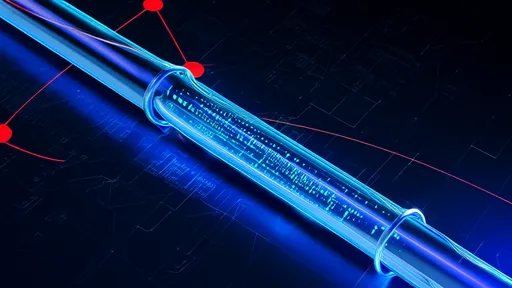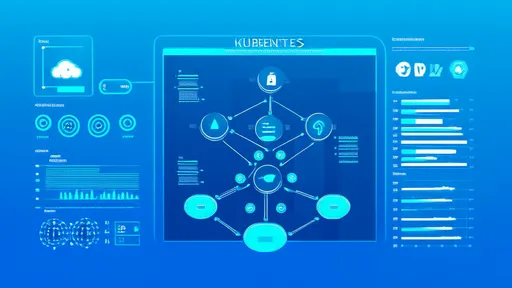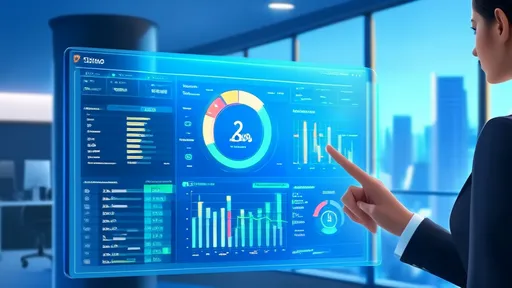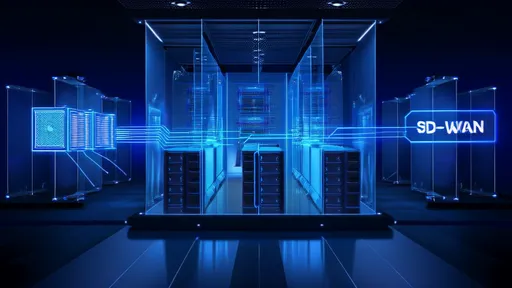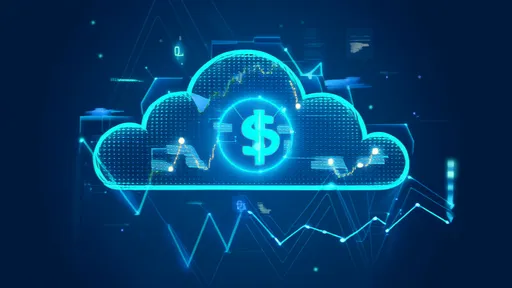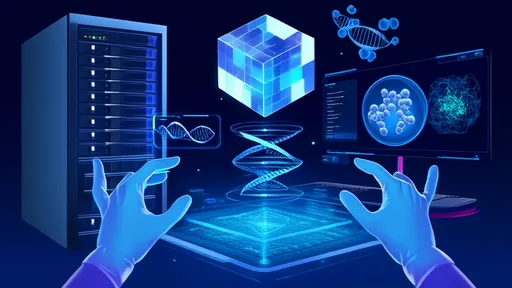In today's digital landscape, cloud computing has become the backbone of modern business operations, offering unparalleled scalability and flexibility. However, this convenience comes at a cost—literally. As organizations increasingly migrate to the cloud, managing and controlling cloud expenditures has emerged as a critical challenge. Many companies find themselves grappling with unexpected bills, wasted resources, and a lack of visibility into where their cloud dollars are going. This is where FinOps, a cultural practice and operational framework, steps in to bring financial accountability to the world of cloud spending.
FinOps, short for Financial Operations, is not just a set of tools or processes; it's a mindset that bridges the gap between finance, technology, and business teams. It empowers organizations to make data-driven decisions about cloud usage and costs, ensuring that every dollar spent delivers maximum value. By fostering collaboration and transparency, FinOps enables companies to optimize their cloud investments without sacrificing performance or innovation. The goal is simple: to make every cloud expenditure clear, controllable, and aligned with business objectives.
One of the core principles of FinOps is visibility. Without a clear understanding of cloud usage and costs, it's impossible to manage them effectively. Many organizations struggle with shadow IT, where departments spin up cloud resources without central oversight, leading to redundant services and ballooning expenses. FinOps addresses this by implementing robust monitoring and reporting mechanisms. Tools like cloud cost management platforms provide real-time insights into spending patterns, resource utilization, and cost drivers. This visibility allows teams to identify waste, such as idle virtual machines or over-provisioned storage, and take corrective action promptly.
Another critical aspect of FinOps is accountability. In traditional IT environments, cloud costs are often centralized and managed by a single team, leading to a disconnect between those who use the resources and those who pay the bills. FinOps shifts this paradigm by decentralizing cost management and empowering individual teams to take ownership of their cloud spending. By allocating costs to specific projects, departments, or even individuals, organizations create a sense of financial responsibility. This accountability encourages teams to optimize their usage, seek cost-effective alternatives, and justify their cloud investments based on business outcomes.
Optimization is where the rubber meets the road in FinOps. With visibility and accountability in place, organizations can proactively optimize their cloud environments to reduce costs without compromising performance. This involves a variety of strategies, such as rightsizing instances to match workload requirements, leveraging reserved instances or savings plans for predictable workloads, and adopting spot instances for fault-tolerant applications. Additionally, FinOps promotes the use of automation to scale resources up or down based on demand, ensuring that companies only pay for what they use. Continuous optimization is key, as cloud environments are dynamic and require ongoing attention to maintain cost efficiency.
Culture plays a pivotal role in the success of FinOps. Implementing FinOps is not just about deploying tools; it's about fostering a culture of cost awareness and collaboration across the organization. This requires buy-in from leadership, as well as education and training for teams at all levels. Finance teams need to understand cloud technologies, while technical teams must develop financial literacy. Regular cross-functional meetings, such as FinOps forums, help align cloud spending with business goals and facilitate shared decision-making. When everyone speaks the same language and works toward common objectives, cloud cost management becomes a collective effort rather than a siloed responsibility.
The benefits of FinOps extend beyond cost savings. By gaining control over cloud expenditures, organizations can reinvest the savings into innovation and growth initiatives. Moreover, FinOps enhances agility, as teams can quickly provision and deprovision resources without fear of budget overruns. This flexibility is crucial in today's fast-paced business environment, where the ability to scale rapidly can be a competitive advantage. FinOps also improves forecasting accuracy, enabling better budget planning and reducing financial surprises. Ultimately, FinOps transforms cloud cost management from a reactive firefighting exercise into a strategic enabler of business success.
Implementing FinOps is not without its challenges. It requires a shift in mindset, processes, and tools, which can be daunting for organizations accustomed to traditional IT management. Resistance to change is common, especially in teams that are used to having unlimited access to cloud resources. Overcoming these challenges requires strong leadership, clear communication, and a phased approach. Start with a pilot project to demonstrate the value of FinOps, then gradually expand across the organization. Celebrate early wins to build momentum and encourage adoption. With persistence and commitment, FinOps can become ingrained in the organization's DNA.
Looking ahead, the importance of FinOps will only grow as cloud adoption continues to rise. Emerging technologies, such as artificial intelligence and machine learning, are being integrated into FinOps practices to provide even deeper insights and automation. Predictive analytics can forecast future spending trends, while AI-driven recommendations can identify optimization opportunities that humans might miss. As cloud providers introduce new services and pricing models, FinOps will evolve to keep pace, ensuring that organizations can navigate the complexities of cloud economics with confidence.
In conclusion, FinOps is more than just a cost-cutting exercise; it's a strategic framework that brings financial discipline to cloud operations. By emphasizing visibility, accountability, optimization, and culture, FinOps enables organizations to take control of their cloud spending and maximize the value of their investments. In an era where every dollar counts, FinOps ensures that cloud expenditures are clear, controllable, and aligned with business goals. For companies looking to thrive in the cloud era, embracing FinOps is not an option—it's a necessity.
In today's rapidly evolving cybersecurity landscape, organizations face increasingly sophisticated threats that traditional perimeter-based defenses struggle to contain. The concept of microsegmentation has emerged as a critical component of zero trust architecture, fundamentally transforming how enterprises protect their digital assets. Unlike conventional security approaches that focus on building strong outer walls, microsegmentation operates on the principle that no entity—whether inside or outside the network—should be automatically trusted.
In the ever-evolving landscape of container orchestration, Kubernetes has firmly established itself as the de facto standard for managing containerized applications at scale. One of its most powerful features is the ability to automatically scale applications in response to fluctuating demand, ensuring optimal performance while controlling costs. However, implementing an effective autoscaling strategy requires more than just enabling the feature; it demands a thoughtful approach grounded in proven best practices.
In today's digital landscape, cloud computing has become the backbone of modern business operations, offering unparalleled scalability and flexibility. However, this convenience comes at a cost—literally. As organizations increasingly migrate to the cloud, managing and controlling cloud expenditures has emerged as a critical challenge. Many companies find themselves grappling with unexpected bills, wasted resources, and a lack of visibility into where their cloud dollars are going. This is where FinOps, a cultural practice and operational framework, steps in to bring financial accountability to the world of cloud spending.
The cybersecurity landscape continues to evolve at a breakneck pace, with containerization sitting squarely at the heart of modern application development. As organizations increasingly deploy applications using technologies like Docker and Kubernetes, the security of the underlying container images has become a paramount concern. This has spurred the development and maturation of a robust market for container image vulnerability scanning tools, each promising to fortify the software supply chain. A comprehensive evaluation of these tools reveals a complex ecosystem where capabilities, integration depth, and operational efficiency vary significantly.
As enterprises continue their digital transformation journeys, the debate between SD-WAN and SASE for hybrid cloud connectivity has become increasingly prominent. These two technologies represent different generations of networking solutions, each with distinct approaches to addressing the complex challenges of modern distributed architectures. While SD-WAN emerged as a revolutionary improvement over traditional MPLS networks, SASE represents a more comprehensive framework that integrates networking and security into a unified cloud-native service.
The evolution of cloud-native databases has entered a new phase with the rise of serverless architectures. What began as a shift from on-premise data centers to cloud-hosted instances has now matured into a more dynamic, cost-efficient, and scalable paradigm. The serverless model represents a fundamental rethinking of how databases are provisioned, managed, and utilized, moving away from static resource allocation toward an on-demand, pay-per-use approach. This transformation is not merely a technical upgrade but a strategic enabler for businesses aiming to thrive in an unpredictable, data-intensive landscape.
In the rapidly evolving landscape of cloud-native computing, the demand for robust observability has never been more critical. As organizations migrate to dynamic, distributed architectures, traditional monitoring tools often fall short in providing the depth and real-time insights required to maintain system reliability and performance. Enter eBPF—extended Berkeley Packet Filter—a revolutionary technology that is redefining how we achieve observability in cloud-native environments. Originally designed for network packet filtering, eBPF has evolved into a powerful kernel-level tool that enables developers and operators to gain unprecedented visibility into their systems without modifying application code or restarting processes.
The landscape of enterprise IT has undergone a seismic shift with the widespread adoption of multi-cloud and hybrid cloud strategies. While this approach offers unparalleled flexibility, cost optimization, and avoids vendor lock-in, it introduces a formidable layer of complexity. At the heart of this complexity lies the significant challenge of managing compatibility across disparate cloud environments. Cross-cloud management platforms have emerged as the central nervous system for this new reality, but their effectiveness is directly tied to their ability to navigate a labyrinth of compatibility issues.
The economic implications of serverless computing have become a central topic in cloud architecture discussions, shifting the conversation from pure technical implementation to strategic financial optimization. As organizations increasingly adopt Function-as-a-Service (FaaS) platforms, understanding the nuanced cost structures and optimization opportunities has become critical for maintaining competitive advantage while controlling cloud expenditures.
The landscape of software development has undergone a seismic shift with the proliferation of cloud-native architectures. As organizations race to deliver applications faster and more reliably through CI/CD pipelines, a critical challenge has emerged: security. The traditional approach of bolting on security measures at the end of the development cycle is no longer tenable. It creates bottlenecks, delays releases, and often results in vulnerabilities being discovered too late, when remediation is most costly and disruptive. In response, a transformative strategy known as "shifting left" has gained significant traction, fundamentally rethinking how and when security is integrated into the software development lifecycle.
The landscape of software testing is undergoing a profound transformation, driven by the relentless integration of artificial intelligence. One of the most impactful and rapidly evolving applications of AI in this domain is the automation of test case generation. This is not merely an incremental improvement to existing processes; it represents a fundamental shift in how development teams approach quality assurance, promising to accelerate release cycles while simultaneously enhancing the robustness and coverage of testing regimens.
In the ever-evolving landscape of artificial intelligence, voice generation technology has emerged as one of the most captivating and, at times, unsettling advancements. The ability to clone and generate highly realistic human voices is no longer confined to the realms of science fiction; it is a present-day reality with profound implications. This technology, often referred to as voice cloning or neural voice synthesis, leverages deep learning models to analyze, replicate, and generate speech that is indistinguishable from that of a real person. The process begins with the collection of a sample of the target voice, which can be as short as a few seconds or as long as several hours, depending on the desired fidelity and the complexity of the model being used.
The semiconductor industry stands at an inflection point where traditional chip design methodologies are increasingly strained by the complexity of modern architectures. As Moore's Law continues its relentless march, the once-manual processes of floorplanning and routing have become prohibitively time-consuming and error-prone. In this challenging landscape, reinforcement learning has emerged not merely as an experimental approach but as a transformative force in automating and optimizing chip layout.
In laboratories and research institutions across the globe, a quiet revolution is underway as artificial intelligence becomes an indispensable partner in scientific discovery. What was once the domain of human intuition, years of trial and error, and painstaking data analysis is now being accelerated at an unprecedented pace by machine learning algorithms and computational power. This transformation is not about replacing scientists but empowering them to ask bigger questions and uncover deeper truths about our universe.
In the ever-evolving landscape of artificial intelligence, a quiet revolution is taking place that promises to fundamentally reshape how machines understand the world. For decades, the field has been dominated by correlation-based approaches—powerful pattern recognition systems that excel at finding statistical relationships in data but fall painfully short when it comes to true understanding. The emerging discipline of causal machine learning seeks to change this paradigm, moving beyond mere correlations to uncover the actual mechanisms that drive phenomena in the real world.
